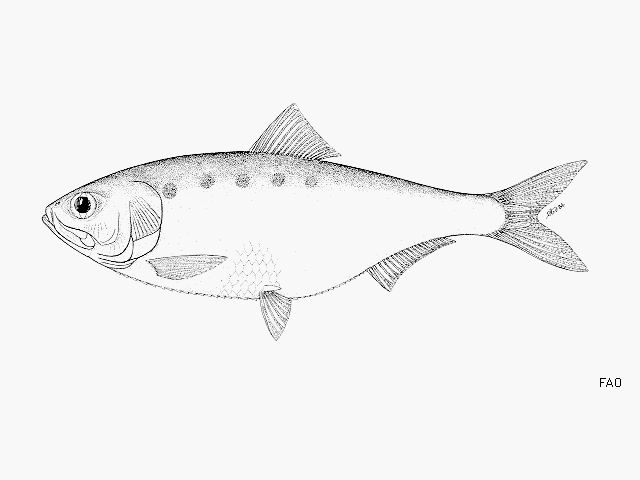| Alosidae (Shads and Sardines) |
| 32 cm TL (male/unsexed); max.weight: 250.0 g; max. reported age: 7 years |
|
pelagic-neritic; freshwater; brackish; marine, anadromous |
| Eurasia: Black Sea, Sea of Azov and Caspian Sea. |
|
Dorsal spines (total): 0-0; Anal spines: 0-0. Body `shad-like', usually rather deep and compressed. Total gill rakers 50 to 180, long and thin, distinctly longer than filaments. Teeth poorly developed in jaws, sometimes barely detectable. A black spot posterior to gill opening and occasionally further black spots on flank in some cases. |
| Schooling and migratory (Ref. 188); at sea, pelagic in coastal waters with steady current and avoids areas with stable salinity; migrates from sea to mouth of large rives and spawns in fresh- or slightly brackish-water at shallow sites washed by flow of large rivers. Males migrate upriver at 2-3 years, females at 4-5; many individuals reproduce 2-4 seasons. Two migration peaks, one in late April (mostly males), one in early May (mostly females), entering rivers when temperature rises above 10°C. Spawns when temperature is at least 15°C, in May to June. Spawning usually occurs in the upper 3 m. Eggs semi-pelagic and demersal. Spent fish migrate back to the sea; juveniles migrate to sea during first summer, remaining there until they mature. Feeds mainly on zooplankton (copepods and mysids) when at sea (Ref. 59043). Depending on the subspecies (10 subspecies known), some are semi-anadromous and spawn in fresh or slightly saline waters, mainly in the lower reaches, whereas others are practically marine and spawn in brackish or even fully saline oceanic waters. One of the most warm-loving Alosa of the Caspian. Only A. a. caspia of the Caspian Sea is of commercial importance (Ref. 188). |
|
Least Concern (LC); Date assessed: 28 June 2022 Ref. (130435)
|
| harmless |
Source and more info: www.fishbase.org. For personal, classroom, and other internal use only. Not for publication.
